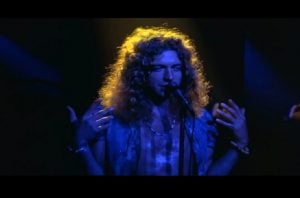5 Very Famous Musicians That Once Struggled With Being Homeless

via walter “Club Dj 80s” / Youtube
Success stories in music often come with a side of struggle, but for some artists, the road to fame was even rockier than most. Before their names lit up marquees and their songs filled arenas, a handful of legendary musicians faced a reality far removed from stardom—one of uncertainty, hardship, and nights spent without a roof over their heads.
For these artists, homelessness wasn’t just a passing setback but a defining period in their lives. Whether it was the result of bad luck, personal battles, or the unforgiving nature of the music industry, their experiences on the streets shaped not only their resilience but also the raw emotion and depth found in their music.
From sleeping in cars to busking for scraps, their struggles were real—but so was their determination to rise above them. Here are five famous musicians who, at one point in their lives, had nowhere to call home.
Sly Stone
Sly Stone revolutionized music with his genre-blending sound, leading Sly and the Family Stone to global fame. Hits like Dance to the Music and Everyday People cemented his status as a funk pioneer. But behind the success, his life unraveled, marked by financial struggles and long periods away from the spotlight.
By the late 2000s, Stone’s situation had taken a drastic turn. The documentary Coming Back for More revealed that he was homeless, reportedly living in a camper van while surviving on welfare. Allegations pointed to his former manager, Jerry Goldstein, who had supposedly cut him off from his royalties through a disputed debt agreement. In 2011, reports claimed he was still living out of a van in Crenshaw, relying on a retired couple for food and a place to shower.
Determined to reclaim what was his, Stone took Goldstein to court in 2010, suing for $50 million over stolen royalties. Though he initially won $5 million in 2015, the ruling was overturned due to prior royalty agreements. Despite his legal battles, Stone’s legacy remains intact—a testament to both his musical genius and his struggles in an industry that often exploits its brightest talents.
View this post on Instagram
Marianne Faithfull
Marianne Faithfull soared to fame in the 1960s with As Tears Go By, becoming a symbol of the era’s cool, effortlessly blending music, fashion, and high society. Her relationship with Mick Jagger only added to her allure, but beneath the glamour, a darker reality was unfolding.
By the early 1970s, addiction and personal struggles had taken their toll. Her once-golden voice was strained, her relationship with Jagger was over, and her career had all but disappeared. For two years, she lived on the streets of Soho, battling heroin addiction and anorexia, a stark contrast to the fame she once enjoyed.
Despite it all, Faithfull found resilience in hardship. Reflecting on that time, she recalled how fellow outcasts—junkies and street drinkers—showed her kindness in ways the elite never had. With determination and the support of friends, she clawed her way back, re-emerging in 1979 with Broken English, a record that turned her pain into art.
View this post on Instagram
Kurt Cobain
Kurt Cobain’s brush with homelessness has become part of rock folklore, largely fueled by Something in the Way, a haunting track from Nevermind. The song paints a bleak picture of living under a bridge, catching fish, and trapping rats—imagery so vivid that many took it as autobiographical.
However, those closest to Cobain have dismissed the idea that he lived under Aberdeen’s Young Street Bridge. His sister Kim and Nirvana bassist Krist Novoselic pointed out that the tides and muddy terrain made it impossible. While the bridge became a symbolic landmark, the truth of Cobain’s struggles played out in different places.
According to biographer Charles R. Cross, Cobain spent months without a stable home. He reportedly started off sleeping in a cardboard box on a friend’s porch, then moved to apartment hallways with central heating, slipping out before residents woke up. At times, he and a friend even crashed in a hospital waiting room, sneaking food from the cafeteria onto patient tabs—a stark contrast to the fame that would soon follow.
View this post on Instagram
Beck
Before Beck became a genre-bending icon, he was just another struggling musician trying to make it in New York. In 1989, with only $8 in his pocket and a guitar in tow, he left the West Coast in search of opportunity. What he found instead was a harsh reality—no money, no home, and no easy way forward.
Despite the hardships, the city shaped his artistry. He connected with a circle of like-minded musicians, honing his craft while bouncing between borrowed floors and park benches. But the brutal New York winters and constant struggle wore him down. By early 1991, he made the tough decision to return to Los Angeles, hoping for a fresh start.
“I was tired of being cold, tired of getting beat up,” Beck later admitted. With nowhere left to turn, he left behind the city that had tested him. The move proved to be the right one—just two years later, Loser launched him into the mainstream, turning his years of struggle into something far greater.
View this post on Instagram
Rim Kwaku Obeng
Rim Kwaku Obeng’s name may not be widely recognized, but his influence on Afro-disco is undeniable. As a key figure in Ghana’s Uhuru Dance Band, he helped shape the genre’s sound in the early 1970s. But when the group traveled to Los Angeles to record, what should have been a breakthrough moment quickly spiraled into chaos.
The recording sessions were disorganized, with bandmate Duke Oketa failing to secure essential arrangements. Obeng managed to salvage the project, earning praise from Quincy Jones himself. However, Oketa’s jealousy led to a shocking betrayal. When the duo later traveled to London, Obeng returned to their hotel to find that Oketa had vanished—taking his passport, belongings, and any hope of stability with him.
Stranded with nothing, Obeng spent six months homeless, surviving on the streets and sleeping in phone booths. His luck finally changed when he crossed paths with Joan Armatrading, who helped him rebuild his life. Eventually, he made his way to San Francisco, where he recorded Rim Arrives (1980) and Too Tough (1982), solidifying his legacy in Afro-disco.
View this post on Instagram











